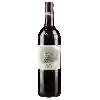
Winery GinestetComtesse Noire Réserve Red Dry
This wine is a blend of 2 varietals which are the Cabernet-Sauvignon and the Merlot.
In the mouth this red wine is a powerful with a nice balance between acidity and tannins.
This wine generally goes well with poultry, beef or veal.
Taste structure of the Comtesse Noire Réserve Red Dry from the Winery Ginestet
Light | Bold | |
Smooth | Tannic | |
Dry | Sweet | |
Soft | Acidic |
In the mouth the Comtesse Noire Réserve Red Dry of Winery Ginestet in the region of Bordeaux is a powerful with a nice balance between acidity and tannins.
Food and wine pairings with Comtesse Noire Réserve Red Dry
Pairings that work perfectly with Comtesse Noire Réserve Red Dry
Original food and wine pairings with Comtesse Noire Réserve Red Dry
The Comtesse Noire Réserve Red Dry of Winery Ginestet matches generally quite well with dishes of beef, veal or game (deer, venison) such as recipes of borscht (russia), veal grenadin with balsamic vinegar and honey or rabbit with cider and mushrooms.
Details and technical informations about Winery Ginestet's Comtesse Noire Réserve Red Dry.
Discover the grape variety: Cabernet-Sauvignon
Cabernet-Sauvignon noir is a grape variety that originated in France (Bordeaux). It produces a variety of grape specially used for wine making. It is rare to find this grape to eat on our tables. This variety of grape is characterized by small bunches, and small grapes. Cabernet-Sauvignon noir can be found in many vineyards: South-West, Loire Valley, Languedoc & Roussillon, Cognac, Bordeaux, Armagnac, Rhone Valley, Provence & Corsica, Savoie & Bugey, Beaujolais.
Last vintages of this wine
The best vintages of Comtesse Noire Réserve Red Dry from Winery Ginestet are 2017, 2016
Informations about the Winery Ginestet
The Winery Ginestet is one of of the world's great estates. It offers 235 wines for sale in the of Bordeaux to come and discover on site or to buy online.
The wine region of Bordeaux
Bordeaux, in southwestern France, is one of the most famous, prestigious and prolific wine regions in the world. The majority of Bordeaux wines (nearly 90% of the production Volume) are the Dry, medium and Full-bodied red Bordeaux blends for which it is famous. The finest (and most expensive) are the wines of the great châteaux of Haut-Médoc and the right bank appellations of Saint-Émilion and Pomerol. The former focuses (at the highest level) on Cabernet Sauvignon, the latter on Merlot.
The word of the wine: Muscat blanc à petits grains
A white grape variety cultivated since antiquity on the shores of the Mediterranean, it is considered the noblest of the muscats. It is mainly used to make sweet wines, often from mutage. In France, it is the sole variety used in many natural sweet wines: muscat-de-frontignan, muscat-de-mireval, muscat-de-lunel, muscat-de-saint-jean-de-minervois, muscat-de-beaumes-de-venise, muscat-du-cap-corse. Combined with Muscat d'Alexandrie, it gives Muscat-de-Rivesaltes. It is also used to make sparkling white wines (clairette-de-die; moscato d'asti and asti spumante in Italy) and dry wines (alsace-muscat). Powerfully aromatic and complex, its wines evoke fresh grapes, roses, exotic fruits, citrus fruits and spices.














